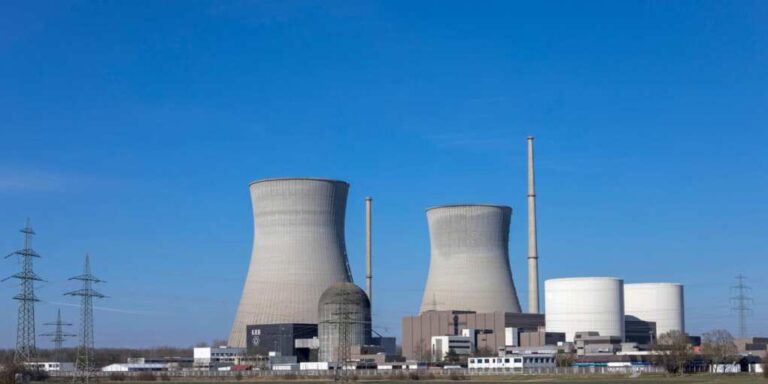
President Donald Trump’s second term may be laying the groundwork for a long-awaited “nuclear renaissance” in the United States, with his administration signaling a major shift toward revitalizing the domestic nuclear industry. But experts say that vision faces a gauntlet of regulatory delays, workforce shortages, and public skepticism before it can become reality.
Immediately after retaking office, Trump signed an executive order aimed at “unleashing American energy,” calling for a reduction in regulatory burdens on both fossil fuels and nuclear power. While fossil fuels remain America’s dominant energy source, nuclear energy’s long-term potential is back in focus — particularly small modular reactors (SMRs), a technology the administration is eager to push forward.
JD Foster, former chief economist at the Office of Management and Budget, called the current process “almost impossible” for building new nuclear facilities. “The Nuclear Regulatory Agency is one of the slowest moving entities in the universe,” he told the Daily Caller News Foundation, adding that the pace of innovation is being suffocated by a slow and outdated permitting process.
Even though previous administrations under Obama and Biden showed interest in nuclear energy, only two large nuclear reactors have been built in the U.S. in the last two decades. Biden’s 2024 ADVANCE Act aimed to streamline licensing and expand siting opportunities for reactors, but the system remains gridlocked — especially compared to nuclear-active countries like China and France.
Trump’s plan includes using SMRs — small, factory-assembled reactors capable of powering hundreds of thousands of homes — as a fast-track solution. His new Department of Energy Secretary Chris Wright is spearheading the initiative, calling for “rapid deployment” and exports of next-generation nuclear technology.
“The long-awaited American nuclear renaissance must launch during President Trump’s administration,” Wright declared in February. And while he’s optimistic, he admits: “It’s not going to come tomorrow — I wish it was.”
In March, the Department of Energy relaunched a $900 million SMR initiative and directed its 17 national labs to prepare for new nuclear construction. The goal? Make nuclear energy a real player in America’s energy mix again and reduce reliance on unpredictable global fuel markets.
Still, there are serious roadblocks. Permitting for a large nuclear reactor can take up to five years. Although the Nuclear Regulatory Commission (NRC) insists it has streamlined its process and cited an 18-month permit issued for a new project, experts remain skeptical about whether the pace is fast enough to keep up with energy demand.
Other hurdles loom large. Foster pointed to the lack of a specialized workforce, which has diminished over decades of nuclear stagnation. “We don’t have that workforce,” he said bluntly, noting it will take time and massive investment to rebuild the talent pipeline.
And then there’s the nuclear waste issue. Regulations require long-term safety guarantees for up to 10,000 years — a standard critics argue is unscientific and paralyzing.
Tim Echols of the Georgia Public Service Commission, which recently brought online the only two new reactors in decades, said the future lies in SMRs. “SMRs can be built quicker and cheaper than big nuclear,” he said. “That will allow states with smaller budgets to deploy advanced nuclear technology.”
Jack Spencer of the Heritage Foundation agrees. “There are a million things that make them [SMRs] attractive,” he said, citing cost, flexibility, and reliability. But he warns that regulatory reform — not deregulation — is key to progress. He also stressed the need for updated uranium fuel markets and smarter radiation risk models.
EPA’s current radiation risk assessments haven’t been updated since 2011. Energy and Environment Legal Institute fellow Steve Milloy called them outdated and unnecessarily strict. “People are so scared of nuclear power and radiation,” he said. “We haven’t seen any sickness … but the fear still blocks deployment.”
Ultimately, Trump’s team sees nuclear energy as vital to solving America’s long-term energy challenge — powering data centers, electric vehicles, and rural grids — all while reducing emissions and increasing reliability.
A DOE spokesperson confirmed that streamlining regulations, supporting construction at national labs, and unlocking SMR funding are all now top priorities. “Rest assured, we are just getting started,” the agency said.






